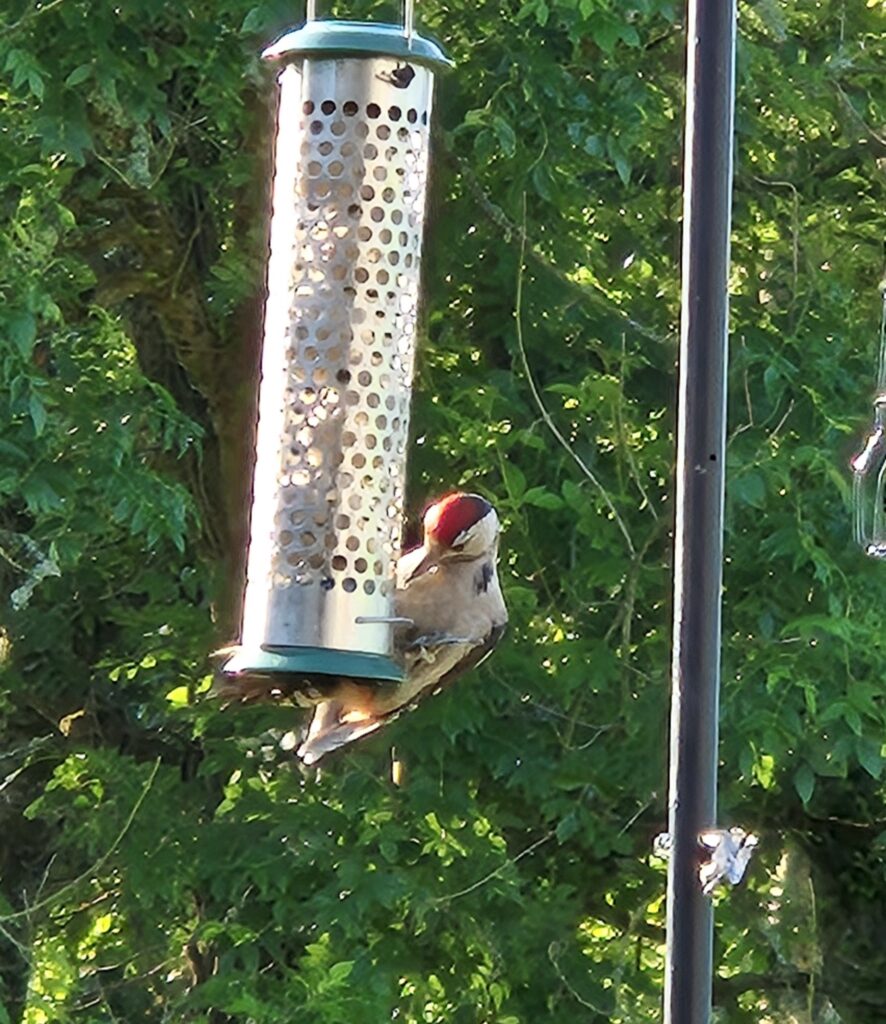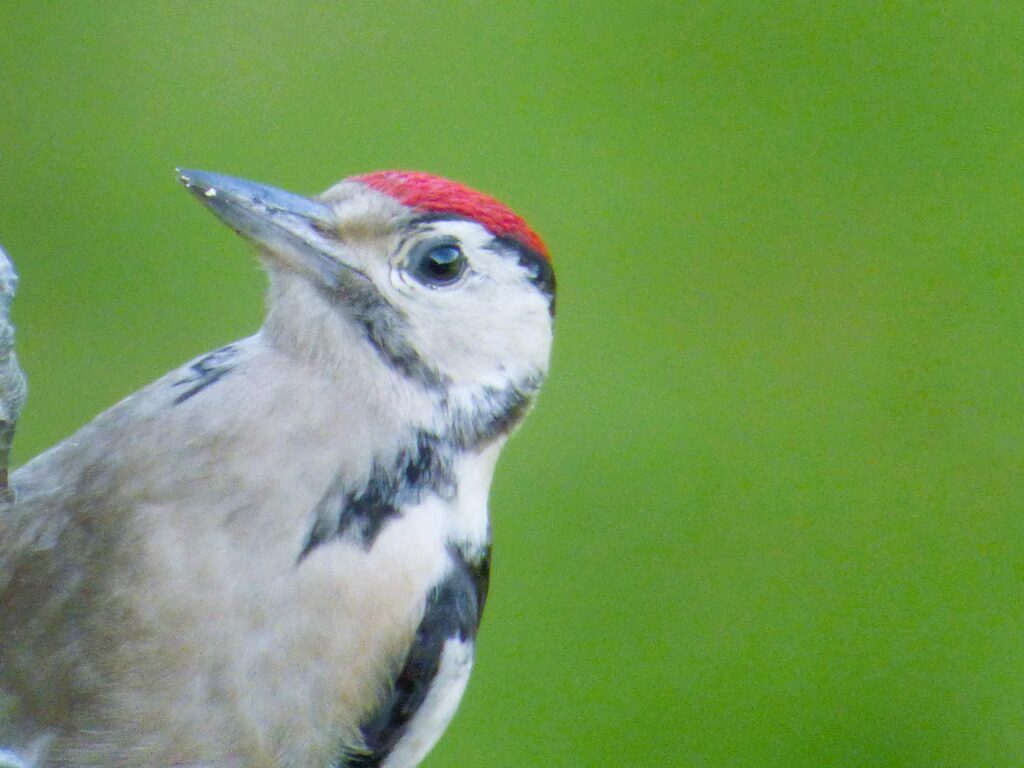Male Female or Juvenile?
Spotting the Differences in Great Spotted Woodpeckers
Male Female or Juvenile? One of the most satisfying parts of filming woodpeckers regularly is getting to know who’s who. At first glance, a Great Spotted Woodpecker might just seem like a flash of red, black, and white — but when you slow things down, the subtle differences between males, females and juveniles begin to stand out.
Being able to identify them properly adds a whole new layer of connection. It transforms a visit from “a woodpecker came today” into “Redflash is back, and he’s brought company.” The good news is, Great Spotted Woodpeckers have some really handy visual clues that make ID straightforward once you know what to look for.
All it takes is a moment’s pause and a bit of observation. Whether you’re spotting from your window or filming for your channel, knowing who’s who can make your footage more meaningful and your commentary far more engaging.
Adult Male Woodpecker
Let’s start with the adult male. The easiest giveaway is the red patch on the nape of the neck — a bright, tidy marking that stands out sharply against the black-and-white plumage. Males tend to have slightly bolder behaviour too.
In my garden, the males are usually the first to dive in and claim the feeder, sometimes even pushing others away with a slight head tilt or low shuffle. You’ll often hear their drumming first, loud and rhythmic, like they’re announcing their arrival.
They’re territorial and confident, and while not aggressive in the usual sense, they’re definitely assertive. If you get a clear look at the back of the head, that splash of red makes it easy to confirm it’s a male.
Adult Female Woodpecker
Adult females look almost identical — until you notice what’s missing. That red nape isn’t there. It’s replaced by a plain black cap that runs from the beak to the nape in one clean stripe. Females also tend to be more cautious.
They watch from nearby trees or hover around the feeder area without immediately diving in. In my experience, they often arrive during quieter times of day when things are calmer, and they’re less likely to be seen engaging in any dominant behaviour. While these are general tendencies and not rules, they’ve helped me build up a pattern of who’s visiting. It’s fascinating to watch how even without colour changes, the personalities of the male and female woodpeckers play out very differently.
The Juvenile

Juveniles are where things get interesting. When they fledge in early summer, they carry a very obvious identifier — a bright red crown that stretches right across the top of the head. It’s far more dramatic than the small nape patch of the adult male and really stands out, especially when the sun hits it.
This crown fades as they mature, often starting to disappear by early autumn. Juveniles also have slightly fluffier feathers and more clumsy flight patterns. They miss their landings. They bob. They freeze up when something flaps nearby. It’s all part of their learning curve, and it’s wonderful to watch them gain confidence over time. In the early days, they’ll often follow an adult to the feeder and mimic their behaviour.
Once you’ve seen all three side by side, you’ll start spotting them without thinking. Keep an eye out for that red nape or crown, pay attention to posture, and listen for how they interact with the space around them. Here’s a quick recap of the key visual markers:
- Adult Male: Red patch on the back of the neck (nape), confident and bold
- Adult Female: No red on the head, full black cap, more reserved behaviour
- Juvenile: Bright red crown across the top of the head, clumsier movement
Filming woodpeckers becomes even more rewarding when you can track individuals and start building a mini profile for each bird. I’ve named a few regulars and can now tell when a new visitor shows up. It adds narrative and memory to each clip.
The more you observe, the more they reveal in plumage and presence. So next time one lands on your feeder, take a second look. Is it Redflash? Is it Dotty? Or is it a brand-new speckled head ready to make its mark?

